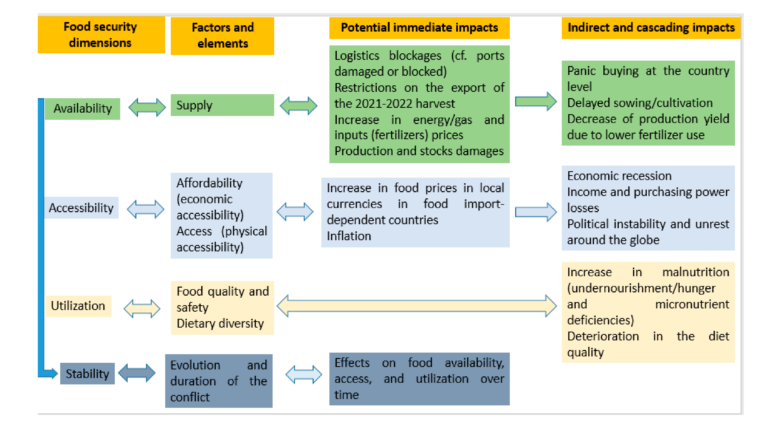The Russia-Ukraine conflict has clearly revealed that the global food supply chain acts as a complex network, connecting nations and facilitating the spread of disruptions from local to distant regions.
“However, previous studies often focus on direct dependencies and overlook indirect dependencies resulting from the unavailability of essential inputs, making a comprehensive assessment of the global food system difficult,” says research director Stefan Thurner of the Complexity Science Hub.
The team’s latest research is published in the journal Nature Food.
Indirect effects often exceed direct effects
To bridge this gap, the research team developed a dynamic global food system model, incorporating data from 192 countries and territories and encompassing 125 food and agricultural products. “This model enabled us to simulate shocks to specific products and countries, closely monitoring the subsequent effects across the entire supply chain,” explains Moritz Laber of the Complexity Science Hub. By quantifying the relative reduction in product availability compared to a baseline scenario (without the shock), the researchers gained valuable insights into the magnitude of these shocks.
Remarkably, they found that indirect effects often exceeded direct effects. For example, a shock to Ukrainian corn production led to a 13% decline in pork availability in Southern Europe. In comparison, a shock to Ukrainian pork production had a negligible effect of less than 1%.
Up to 85% loss of maize
In a worst-case scenario simulation, where agricultural production in Ukraine was completely lost due to the Russia-Ukraine conflict, the study unveiled diverse effects on products and regions worldwide. “The loss of grains, particularly maize, reached up to 85%, while edible oils, especially sunflower oil, experienced losses of up to 89%. Additionally, certain meat types, such as poultry, suffered losses of up to 25% in various countries,” says Laber.
The number of products for which a region is dependent on Ukraine varies greatly: Southern Europe is the most affected, with 19 out of 125 products with losses of more than 10%, followed by West Asia and North Africa, where this is the case for 15 and 11 products respectively.
These findings emphasize that localized production disruptions have far-reaching implications, extending beyond geographic boundaries through trade relationships and the entire production chain. Consequently, it is imperative to consider both direct and indirect effects when estimating losses and formulating effective interventions.
Risk not only from wars
As the Russia-Ukraine conflict enters its second year, food prices are still above 2021 levels, according to the European Council. In addition, various events, including extreme weather events, economic crises, and geopolitical tensions, can trigger similar disruptions. This underscores the importance of exploring interdependencies within global food supply chains and gaining a comprehensive understanding of the direct and indirect impacts of local shocks to raise awareness among policymakers and stakeholders of otherwise overlooked risks within the global food system.
These research findings are a valuable first leap in understanding the complex dynamics of global food supply chains and their vulnerability to local shocks. Further research is needed to map them at a more granular level considering individual products and subnational scales at a higher temporal resolution. Moreover, at present, the model assumes that countries do not change their trading partners after a shock. However, restructuring trade relations may exacerbate existing inequalities, as wealthier countries may secure remaining resources at higher prices from alternative suppliers.
In March, the CSH co-founded the Austrian Supply Chain Intelligence Institute (ASCII) to contribute even more to making supply dependencies visible in the future.
More information:
Shock propagation from the Russia–Ukraine conflict on international multilayer food production network determines global food availability, Nature Food (2023). DOI: 10.1038/s43016-023-00771-4
Provided by
Complexity Science Hub Vienna
Citation:
Indirect effects of the Russia-Ukraine conflict revealed: Global food supply at risk (2023, June 15)



